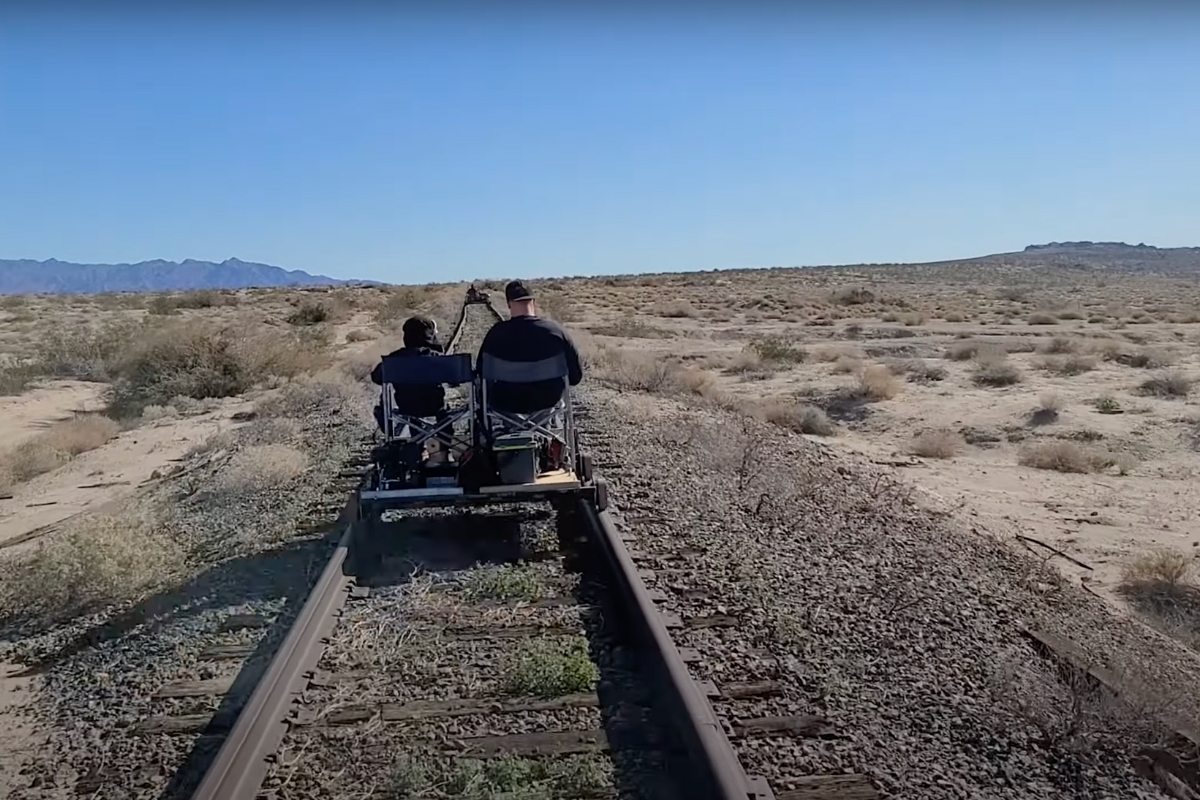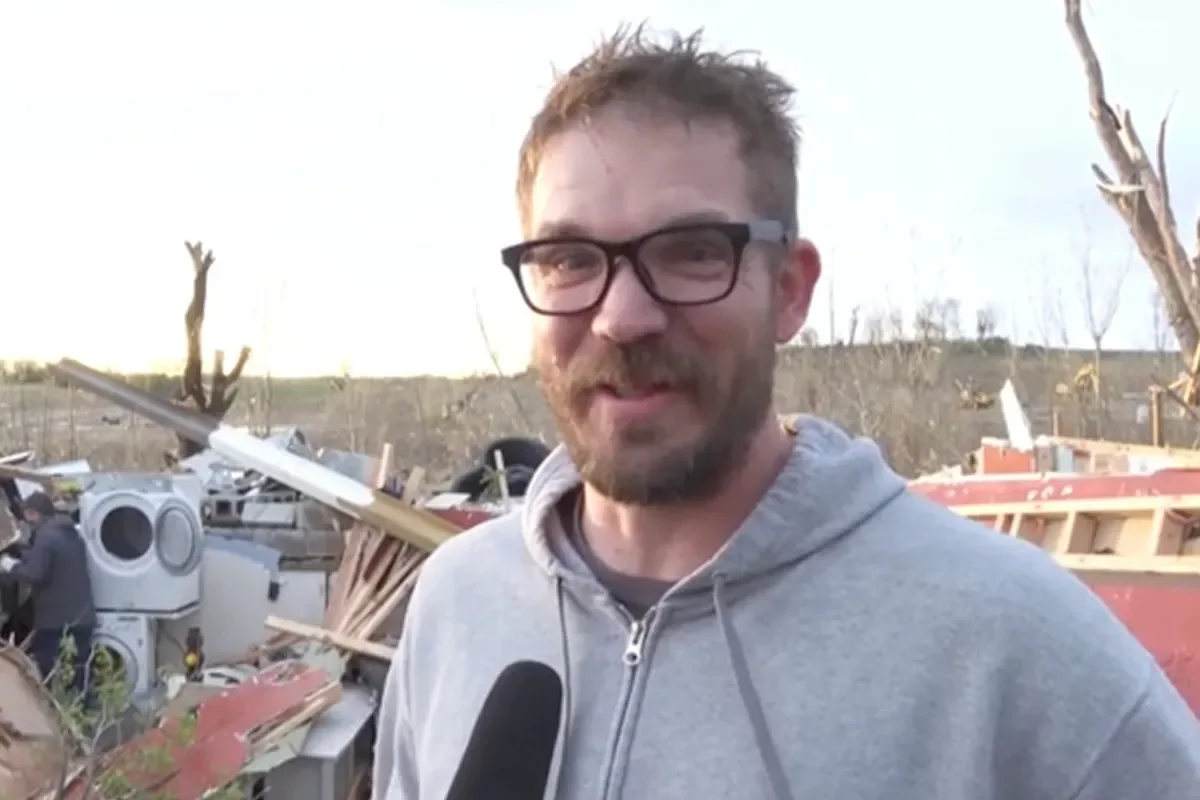

Earlier this month, Outdoors.com shared a video of a rail cart rider exploring Southern California using abandoned rail lines. The video gained a lot of attention as a unique way to go about the desert, and we wanted to learn more about the hobby.
We spoke with Ryan Randomness, who’s brought his cart throughout the southwest and even into Mexico, to learn more about the hobby. It’s important to note that there are laws against using abandoned train tracks, but that doesn’t stop people from taking part in rail carts.
Outdoors.com: What inspired you to build your rail cart?
Ryan: I remember watching a movie back in the 80s or early 90s where the main character had a rail bike he would ride and I always thought it was so cool.
Outdoors.com: How long did it take to build?
Ryan: The cart itself is very simple. The hardest part and the part that stops most people from doing it is the wheels. I ended up having to make them.
Outdoors.com: How do people find these abandoned rails?
Ryan: There are a couple of websites with maps of abandoned lines. I also use Reddit and social media.
Outdoors.com: What are some of the coolest places you’ve rode to?
Ryan: I think the coolest place I’ve gone was Tecate, Mexico. We had a few unexpected things happen but that’s what makes it exciting.
Outdoors.com: What do you do if it breaks down?
Ryan: I haven’t broken down yet, but I’ll cross that bridge when I get there.
Outdoors.com: Anything else people should know about rail carts?
Ryan: It can be dangerous. There are groups out there that do it safely, and I would reach out to them if someone is interested in riding the rails.
Outdoors.com: It’s illegal to ride train rails, even if abandoned. How does that play into the culture of rail cart riders? Are there efforts to change these rules?
Ryan: I don’t get involved with the politics of railroads. I do know that they are removing old lines everywhere, and they are quickly disappearing. This probably won’t be changing anytime soon.
More About Rail Carts
While Ryan’s car is engine-powered, plenty of people enjoy rail carts with pedals. In fact, the hobby is a popular way for tourists to explore areas.
In Andrews, North Carolina, there is a pedal cart company that lets you legally ride old tracks that take you around town and near the Appalachian Mountains. Fortunately, for the uphill parts, the carts do have pedal assist, almost like an E-bike.
These simple carts have outfitters online where you can buy the wheels, pedals, and more that’s needed to get started.
Railriders.net is one outfitter based in Leadville, Colorado. The company’s selling point states, “Not too long in the distant past, before jetliners ruled the skies and the automobile became mainstream, the world traveled on rails. As the twentieth century pressed on and the rail networks of the world began to shrink in size, they left many thousands of miles of unused track in their wake. The Railrider was invented as a way to reuse the abandoned railroad tracks littered across the world.”
Abandoned Rail Lines and Outdoor Use
The obvious reason for banning the use of abandoned rail lines is for safety. While they are hopefully truly abandoned, the risk of coming across a train should be front of mind. That said, if you’re looking for user input regarding train tracks, you can find lines in almost every U.S. state on this website.
Fortunately, a lot of these old train lines are being put to good use with rail trails. This is the practice of using these old paths to build walking and biking paths for recreation and transportation.
Organizations like the Rail to Trail Conservancy work with states and local leaders to help convert these old lines to new ways to get outdoors. The organization says they’ve seen more than 24,000 miles worth of old rail lines become hiking trails, with thousands more in the works.









